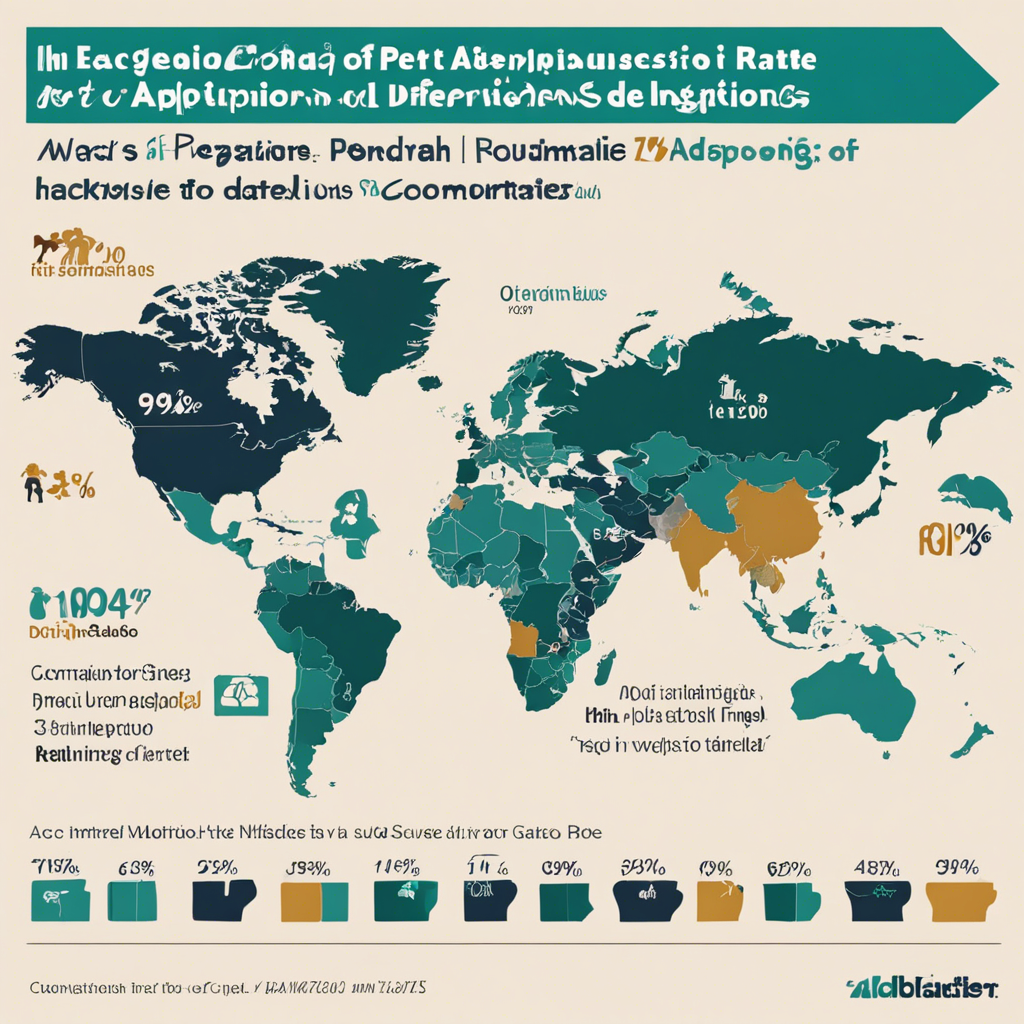Exploring regional differences in pet adoption trends, highlighting disparities and factors influencing adoption rates.
Pet adoption is a noble act that not only provides companionship but also saves the lives of countless animals in need. However, adoption rates can vary significantly across different regions, and understanding these disparities is essential for promoting animal welfare and ensuring every pet finds a loving home. This article delves into a comparative study of pet adoption rates across various regions, examining factors that contribute to these variations and providing insights to support organizations working in this field.
The study’s findings reveal intriguing trends in pet adoption preferences across regions. From urban centers to rural areas, understanding these variations is crucial for animal shelters and rescue organizations to devise effective strategies and maximize adoption rates.
Key Regional Factors Influencing Pet Adoption Rates
Several factors contribute to the diverse adoption rates across regions.
Population Density and Urbanization
Urban Areas: Cities often have a higher concentration of adoption centers and shelters, making pet adoption more accessible. However, limited living space and stringent housing regulations can deter urban dwellers from adopting pets, as explored in the challenges in urban pet adoption.
Rural Areas: Rural regions might have fewer adoption facilities, but residents often have more space and fewer restrictions on pet ownership.
Economic Factors
Economic conditions significantly impact adoption decisions. Pet ownership costs can be a significant hurdle for low-income families, while regions with higher disposable incomes may have more resources for pet adoption and care.
Cultural and Social Attitudes
Cultural and social norms play a pivotal role in pet adoption choices. Some communities have a deep-rooted love for animals, while others might prioritize different values. Understanding these attitudes is vital for crafting effective adoption campaigns.
Regional Adoption Statistics and Trends
Regional Adoption Centers and Success Stories
This section highlights successful adoption centers in different regions, showcasing their innovative strategies and the impact they’ve had on pet adoption rates.
Differing Preferences and Trends
A closer look at the data reveals fascinating differences in adoption preferences across regions. Some areas might favor certain breeds or types of animals, while others exhibit a more diverse range of adoptions. These trends can provide insights for tailored adoption campaigns.
Uncovering Successful Adoption Campaigns
Exploring successful adoption campaigns in various regions can offer valuable lessons. From marketing strategies to community engagement, understanding these successes can empower shelters to replicate effective practices.
External Resources
- Pet Adoption Trends: A Regional Analysis
- Successful Animal Shelters: Strategies and Insights
- Overcoming Pet Adoption Barriers: A Comprehensive Guide
Commonly Asked Questions About Pet Adoption
How can people in densely populated areas manage pet adoption with limited space?
Adopting smaller breeds or considering pets that don’t require as much space, such as cats, can be a solution for urban dwellers.
What are some cost-effective ways to care for adopted pets in low-income communities?
Local shelters or community programs often offer low-cost veterinary services and pet supplies to support pet owners in need.
How do cultural beliefs impact pet adoption in certain regions?
Cultural beliefs can influence the types of pets considered for adoption, with some cultures favoring specific breeds or types of animals.
Conclusion
The comparative study of pet adoption rates reveals a complex interplay of factors that shape adoption trends across regions. Understanding these disparities and embracing the diversity of adoption preferences is crucial for animal welfare advocates, shelters, and policymakers. By adapting strategies to local cultures, economies, and environments, we can collectively work towards ensuring that every adoptable pet finds its forever home. Through informed decision-making and community engagement, the goal of widespread and successful pet adoption becomes more achievable.
